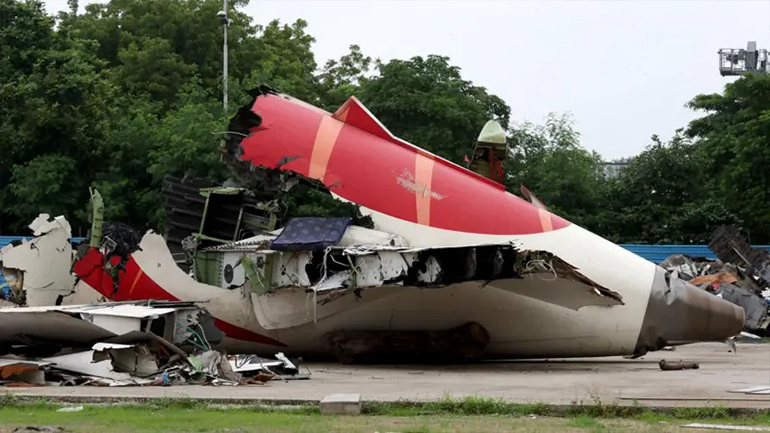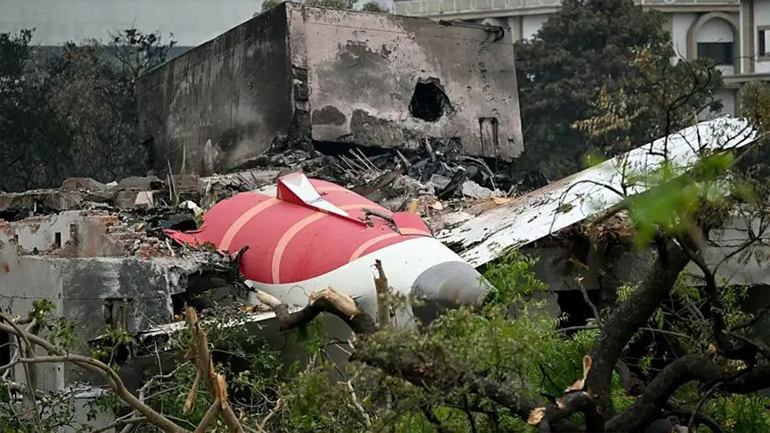

In the Indian state of Ahmedabad, the preliminary investigation report into last month’s Air India plane crash has provided some answers but also sparked new speculation about how the aircraft crashed just seconds after takeoff. Air India Flight 171 remained airborne for barely 40 seconds before crashing into a densely populated area near the airport. It is now considered one of the most mysterious accidents in Indian aviation history. The crash claimed the lives of 241 people on board and 19 on the ground, with one passenger miraculously surviving. The report was published on Saturday by India’s Aircraft Accident Investigation Bureau (AAIB) and marks the first official account of the incident. However, aviation experts have noted that the report only covers selective findings, leaving many critical questions unanswered.
Under international protocol, any country investigating an aviation accident is required to submit a preliminary report within 30 days of the incident. The AAIB (Aircraft Accident Investigation Bureau) released its report in compliance with this requirement. Although the AAIB is leading the investigation, U.S. interest in the case is evident, as both the aircraft manufacturer, Boeing, and the engine maker, GE Aerospace, are American companies. The report did not determine the exact cause of the crash. However, it has sparked several controversies. According to the report, both fuel control switches of the 12-year-old Boeing 787 Dreamliner unexpectedly moved to the "cutoff" position shortly after takeoff, which shut off fuel supply to both engines, resulting in a complete power loss. Normally, the cutoff mode is used after landing, not during flight. The cockpit voice recordings revealed a conversation in which one pilot asked the other, "Why did you switch to cutoff?", to which the response was, "I didn’t do it." It remains unclear who made these remarks, as the co-pilot was flying the aircraft while the captain was overseeing the operation. It’s important to note that a preliminary report is not meant to provide a complete explanation or conclusion. Its purpose is to summarize initial findings, which may later evolve into a full-scale investigation. Additionally, investigators are not obligated to make preliminary reports public.

According to initial reports, both fuel control switches on the plane suddenly went to the 'cut-off' position shortly after takeoff.
Based on the information released so far, some individuals in the media and online have claimed that the crash was the result of a deliberate action by one of the pilots. These claims have drawn a strong response from the Indian Commercial Pilots Association, which warned that “making such serious allegations based on incomplete or preliminary information is not only irresponsible but also deeply insensitive to those affected and their families.” The Association further stated: “In the absence of verified evidence, suggesting that the pilot committed suicide is a serious violation of ethical reporting standards.” A similar stance was taken by Air India CEO Campbell Wilson in a memo sent to staff, in which he cautioned against jumping to conclusions. Following the release of the Indian investigation report, multiple aviation industry experts, including pilots, accident investigators, and engineers, have commented. Most agreed that many key details are still missing. One pilot, speaking on condition of anonymity, said: “They’ve only told us what they want to tell us and are hiding what they don’t want to reveal. This is an incomplete report.” The biggest criticism so far is the lack of a transcript from the cockpit voice recorder. Such a transcript could provide context for the conversation between the pilots about the fuel cutoff switches. Bjorn Fehrm, an aeronautical analyst from Leeham News, called this omission “absolutely unacceptable.” He added: “They have all the technical details. Then you refer to this conversation between the pilots, but you don’t even clarify who is speaking.” Fehrm also expressed concern about what happened in the cockpit between the switches being moved from “run” to “cutoff.” One switch was returned to its normal flight position after 10 seconds, triggering the engine restart process. He commented: “It feels like someone is trying to cover something up.”

The wreckage of the crashed plane has been kept at Sardar Vallabhbhai Patel Airport in Ahmedabad.
An engineering source has stated that the report is “highly selective”, providing no detailed information about the state of the engines before the fuel switches were flipped. The document notes that the engine speed began to decrease after takeoff "because fuel supply to the engines was cut off." The source emphasized this is a critical detail, as pilots are trained that if an engine starts losing power, they should switch the fuel control to cutoff and then back on in an attempt to restart the engine. Tim Atkinson, a former air accident investigator in the UK, expressed disappointment with the report, saying it provided a few key facts but raised even more questions. Another controversial aspect of the report is its reference to a 2018 safety bulletin issued by the U.S. Federal Aviation Administration (FAA). In that bulletin, the FAA warned that some Boeing 737 models had fuel control switches installed without locking mechanisms, increasing the risk of accidental activation. However, U.S. investigators noted that the absence of this locking feature did not necessarily make the aircraft unsafe. The FAA had advised Boeing aircraft operators to inspect the locking features of the fuel cutoff switches. According to the AAIB’s report, Air India did not comply with this recommendation. This has fueled speculation that the accident may have been caused by the unintentional flipping of the switches. Additionally, engineering sources noted that the aircraft involved in the crash had its throttle control module replaced twice, with the most recent replacement occurring two years prior. As a result, the fuel cutoff switches would likely have also been changed.

Powered by Froala Editor